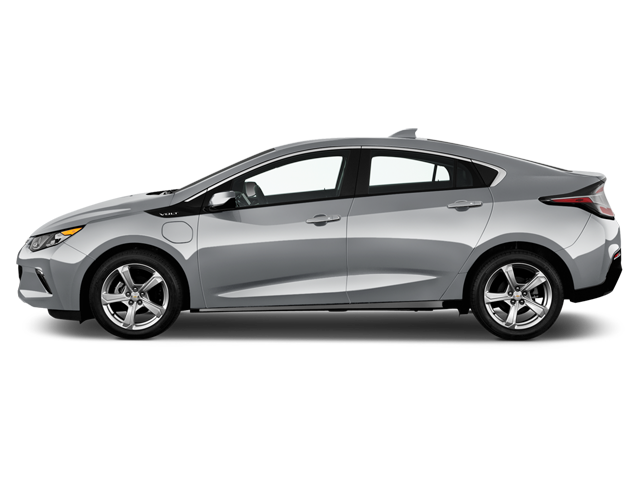It has barely entered the marketplace and already the new Chevrolet Bolt EV fully electric car has earned a multitude of Car of the Year titles from various automotive organizations and publications. The one-of-a-kind vehicle is notable especially for its lithium-ion battery that offers drivers a 350 km range, in a competitively priced car.
Chevrolet’s batteries undergo multiple tests and evaluations, in a test centre inaugurated in 2008, and which cost over $55 million to construct. Located at GM’s technical centre in the Detroit suburb of Warren, the Global Battery Systems lab counts 150 employees.
Temperature test chambers and giant shakers
In addition to a research and development centre devoted to the next generation of batteries, the facility includes a highly impressive lab equipped with 18 test chambers designed to test batteries at temperatures ranging from -68°C to +85°C and for long periods if required. The lab also features a highly useful mechanism that can discharge and recharge batteries nearly instantaneously.
Unsurprisingly, much of the work at the lab is dedicated to developing rapid recharging systems – an element several engineers we met there believe to be the next big area of development for batteries.
Those engineers also have at their disposal a thermal shaker, which they use to put the batteries through multiple tests such as strong shaking and vibrations that vary in intensity. The giant machine allows for recreating different road conditions, from the smooth asphalt found on California highways to the bone-jarring cobblestoned streets of European cities like Brussels.
Tesla vs GM
During our visit, on one of the tables that we passed by sat a section of the Tesla battery that uses a totally different technology than that developed by General Motors. Tesla’s version groups together, between two metallic plates, a multitude of small cylindrical batteries that look like nothing so much as large AA-type batteries. These thousands of batteries are linked together to create a whole capable of delivering an extended range and of being recharged rapidly.
GM and its partner LG opted to rely on a technology that seems much more sophisticated. Their batteries are comprised of rectangular elements in which circulate the cooling and heating liquids, and which are connected together in order to supply the necessary energy. This power is generated by linking the batteries together via an electronic control system.
In contrast with the battery of the Volt, the charge of which only attains around 65%, the Bolt’s battery is recharged to nearly full capacity without causing a risk of diminution of its longevity and durability.
A technology that serves many vehicles
The Global Battery Systems lab has paved the way for developing numerous battery systems designed for varying uses. In addition to those created for the Volt and the Bolt EV, there’s also the exclusive battery pack created for the new all-electric Spark EV.
Over in Europe, the Opel Ampera EV features an identical battery pack as the one fitted in the Bolt EV, though it’s known under a different banner. Then factor in the Malibu Hybrid, the Buick LaCrosse Hybrid (sold in China), the Chevrolet Silverado and GMC Sierra hybrid trucks, and of course the upcoming Cadillac CTS 6 plug-in model.
Resuscitated plant, conventional assembly
Chevrolet’s first fully electric car is assembled at the Lake Orion plant located in Michigan’s Pontiac/Sterling Heights region. There are likely a number of factors that led to this facility begin chosen, but foremost among them is that the Orion plant is the site of assembly for, among other cars, the Sonic, a compact car virtually identical in size to the new Bolt.
The plant was inaugurated in 1984 in a ceremony attended by President Ronald Reagan. Over the years a number of models were produced there, including the Chevrolet Malibu, the Oldsmobile 88, the Cadillac DeVille, the Buick Rivera and a host of others. The financial crisis of 2009 led to its closure.
It would be two years and a massive reorganization of the company before General Motors restarted operations there in 2011. The reopening was enabled in part by a special agreement between the carmaker and its unionized workers, who accepted marginal reductions in salaries and benefits. Initially production centered around the Sonic, the only compact car being manufactured in North America. Then, in early 2015, work began on modifying the plant to allow for insertion of the Bolt EV into the assembly line.
Sonic–Bolt EV: Same assembly line
When you stop to think about it, an electric car is not any different than a conventional, combustion-engine vehicle, apart from the actual engine and its power source. This means manufacturers can save on production costs by using a shared assembly line for the production of several models. Machine tools can detect the difference between a Sonic and a Bolt EV using sensors to ensure the right component is placed on the right vehicle.
This means that when a Bolt EV arrives at the station where the battery is installed, the machine transporting the energy-source components moves to the precise location required, and stays immobile for the period of time required to secure them under the vehicle. With the heavy battery being supported by the machine, the operation takes mere seconds, workers needing only to tighten bolts.
This solved the problem of installing the electric motor. And really, it’s the same procedure as used for installation of internal-combustion engines: the electric powertrain is put into exactly the correct position using automated support machines.
It’s worth noting that the European version of the Bolt EV, the Opel Ampera EV, is also assembled at the Lake Orion plant. Currently the factory is only operating at 25% of capacity, but the rate of production could be easily increased if demand grows for the Bolt EV. A last noteworthy detail about the plant: the person in charge of production for the Bolt EV is a Quebecer, Yves Dontigny.









